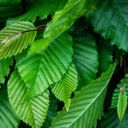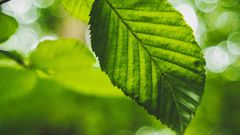



The hornbeam species are native to temperate regions of the Northern Hemisphere, mainly the Far East and China in particular. Only one of them is of North American origin: the American hornbeam. The common hornbeam carpinus betulus is one of only two hornbeam species originating in Europe, along with the oriental hornbeam.
The hornbeam trees provide shade, which is important for regulating the temperature in forests, creating cool habitats for wildlife and providing pleasant recreational areas for humans. Hornbeam roots help prevent soil erosion by stabilising the soil, which is crucial for maintaining soil fertility and a healthy forest ecosystem. Finally, hornbeam is a very important companion species in temperate forests, living in symbiosis with many species to which it has become accustomed over a very long period of time. It is a tree that is readily planted for its biodiversity and for the excellent firewood it produces.
The hornbeam is a fairly invasive species found only in the forests of Central and Western Europe up to an altitude of 1,000 metres. It is a shade or semi-shade species that does not fear the cold. Most of the time, it grows in coppice under high forest, particularly in association with oaks. Hornbeam needs warm summers for its seeds to mature. This species grows on fairly acidic to basic, dry and cool soils. It does not grow on soils that are too acidic or soggy. It has a short lifespan, rarely exceeding 150 years.
The hornbeam was once widely used to produce firewood. It is used less and less because of its slow growth. However, it is still one of the best types of firewood, thanks to its high calorific value and slow, regular combustion. Hornbeam is still used to make paper pulp, game pieces and tool handles. Nowadays, it is mainly used as an ornamental tree and for diversity. It is also widely used to form hedges known as "charmilles".
A tree much cultivated by the Celts, the symbols of the Hornbeam are loyalty and spirituality. The tree got its name from the people who sat under its trunk and fell "under its spell". It is also the tree of hard work and conscientiousness. To avoid confusing it with the beech tree, which it closely resembles, learn this amusing little phrase: "Adam's charm is to be naked". The leaves of the hornbeam are toothed, while those of the beech are hairy.